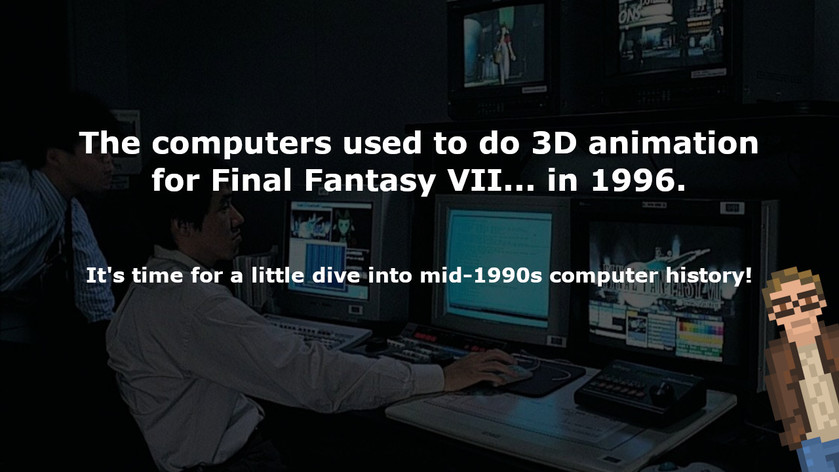This is a picture, from 1996, of the 3D animators working on Final Fantasy VII for the Sony PlayStation.
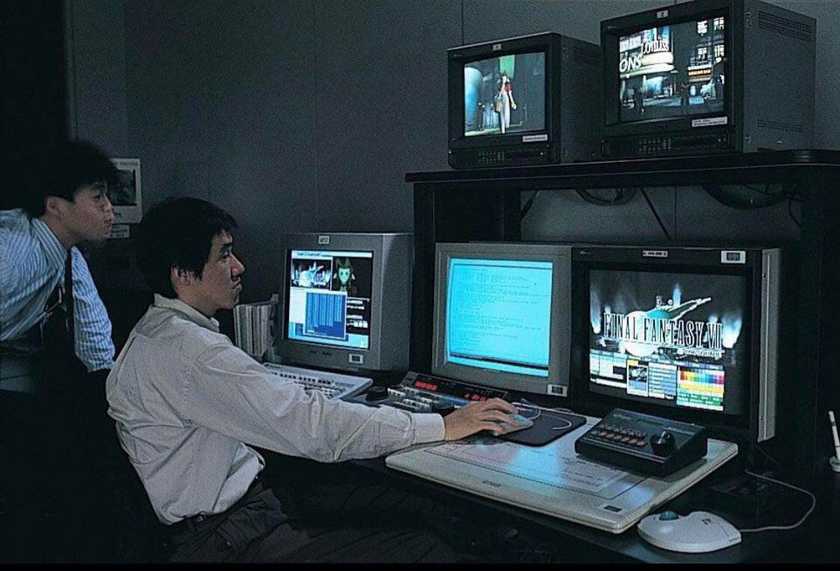
There’s a lot going on in that picture. Let’s take a closer look at exactly what computers and gear they were using to do the 3D animation for this game.
Why? Because, Final Fantasy 7 is a true classic. When the game was first released in early 1997, for the Sony PlayStation, it took the RPG gaming world by storm. To this day, many consider it the greatest entry in the franchise.
While I tend to prefer the earlier, 2D titles, even I must admit that Final Fantasy VII is nothing short of a masterpiece.

Technically, Final Fantasy 7 wasn’t the first time Squaresoft tested the 3D waters with their Final Fantasy franchise.
The Final Fantasy SGI Demo
That honor goes to what is known as the “Final Fantasy SGI demo”. A 3D playable demo, using characters from Final Fantasy 6, showcased in 1995.

“In August of '95, one of the US's largest CG conventions, SIGGRAPH, was held in Los Angeles. At that time we were not sure what the next generation RPG game should look like, so as an experiment we created a CG based, game like, interactive demo to be presented at the show. It focused on battle scenes that were 100% real time and polygon based.” - Hironobu Sakaguchi (creator of Final Fantasy)
Polygon did an excellent interview with Kazuyuki Hashimoto (the CG Supervisor of the Final Fantasy 6 SGI Demo) that gives some background on how that was made.
Why was it called the “SGI Demo”? Because it was created using SGI workstations, naturally.
Specifically, this beastly machine… the SGI Onyx.
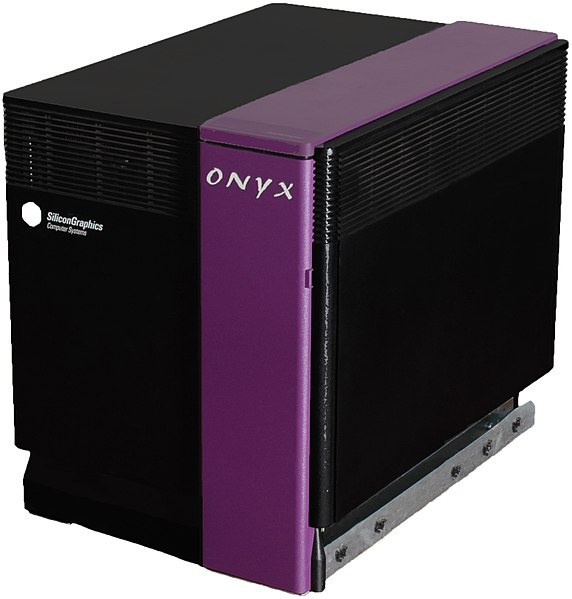
Originally released in 1993, the Onyx from SiliconGraphics was an absolute powerhouse. The machines were powered by between one and four MIPS processors (originally the R4400’s) — ranging from 100 MHz to 250 MHz.
The RAM on these machines were not industry standard — they were proprietary, 200 pin SGI RAM modules available in 16MB, 64MB, or 256MB variants. The memory board (known as MC3), had slots for 32 memory modules — and could handle up to 8 GB of RAM. 16 GB in the rackmount version (yeah, there was a massive rackmount version).
Think about that for just a moment. This was the mid-1990s.
As massively beastly as that already sounds… these impressive specs were not the sole driving force in an SGI Onyx. That honor went to the graphics system… the Reality Engine 2.
The Reality Engine 2 contained twelve (count ‘em… twelve) Intel i860XP CPUs. Those CPUs, part of Intel’s 80860 line, were completely different from the x86 chips that Intel produced… the 860s were an entirely different, RISC architecture. And SGI used them (12 of them) for the geometry math of the Reality Engine.
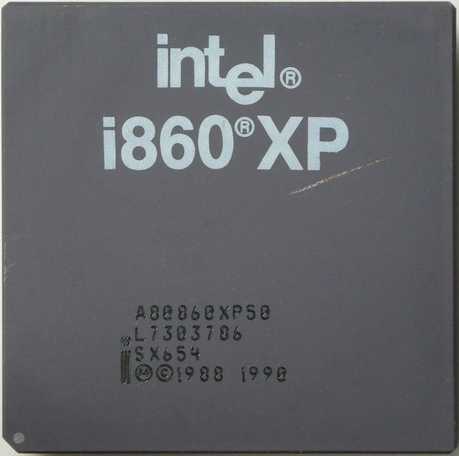
If the name “Reality Engine” rings a bell: These machines were employed in the development of Nintendo 64 games in the mid-1990s.
Powering the SGI Onyx was the IRIX operating system — which was based on UNIX System V with BSD extensions. The specific version used during the production of the “Final Fantasy SGI Demo” would have likely been IRIX 6.0.
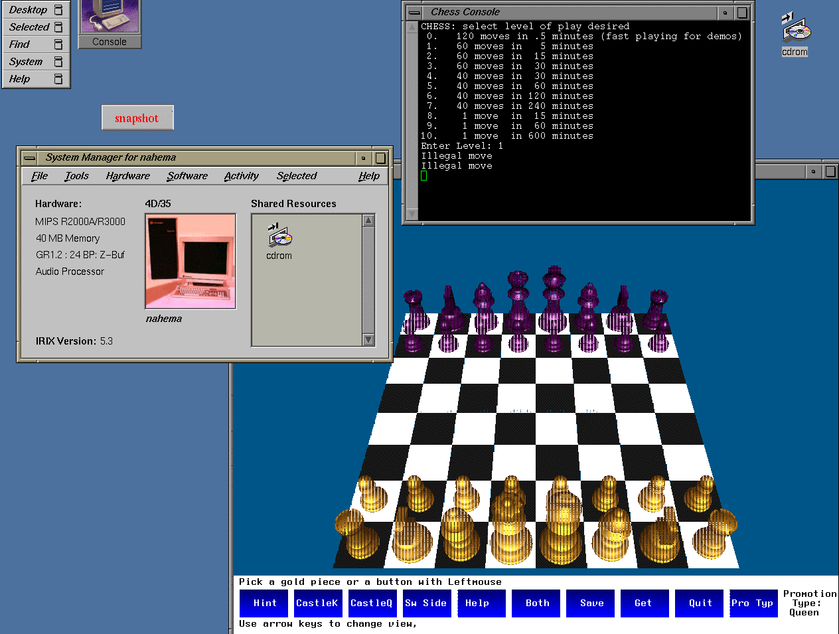
The cost of these massive rigs? Between $100,000 and $250,000 (depending on configuration).
Now. Take a look at that picture from 1996 again. The one where the two guys are working on Final Fantasy 7…
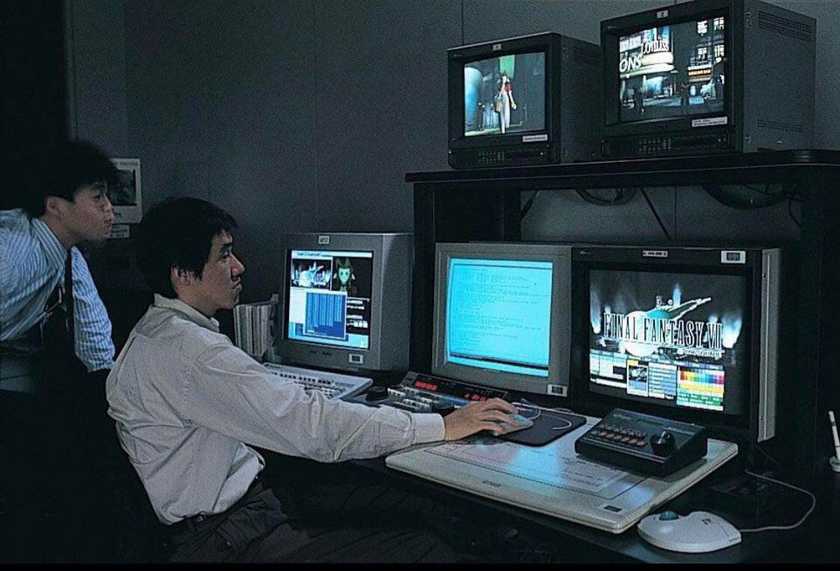
See that far left hand side monitor? Hm. Too small. Let’s zoom in. ENHANCE!
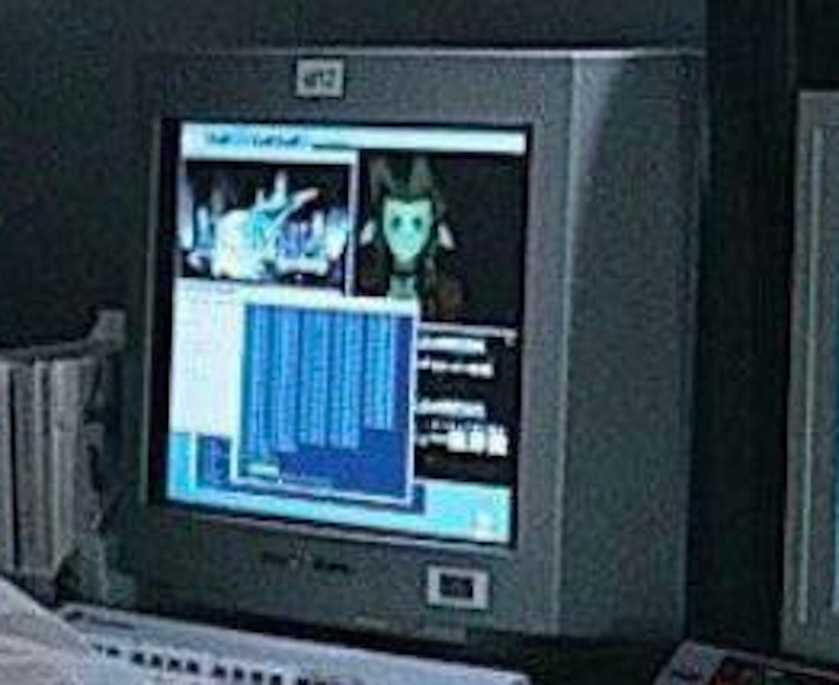
That is the IRIX 6 desktop running on what is likely an SGI Onyx Deskside workstation.
I say “likely” because the machine itself is not in full view. It is entirely possible that monitor is connected to an off-camera Onyx Rackmount system as well. It is also technically possible that this is connected to an Onyx2 deskside rack model such as this one:

However, considering the development timeline of Final Fantasy 7 — and the fact that the Onyx2 line did not debut until late 1996 — the original Onyx Deskside seems the most likely to be powering that far left monitor.
But what the heck is that middle screen?!
Let’s zoom in on the middle screen for a second. Because that is one seriously interesting rig.
ENHANCE!
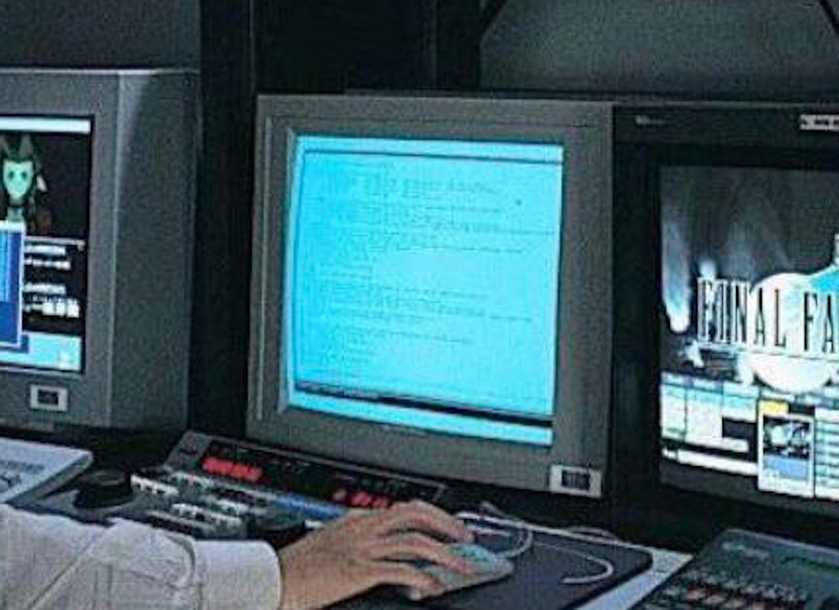
“What the heck is on that screen,” you ask?
That is Genera.
“What the heckatarnations is a Genera?!”
Genera is an operating system, originally developed in the early 1980s, by Symbolics. And it was a pretty impressive system in it’s own right.
Genera was, in reality, a fork of the LISP Operating System developed at MIT. Virtual memory, a full GUI and window manager, neworking, Emacs… this thing had it all.
Back in 1982, the Symbolics Graphics Division was founded to build graphics software, with a heavy emphasis on 3D, on top of Genera — known as the “S-Graphics” suite of tools.
These were incredibly high end graphics tools used in quite a lot of movies throughout the 1980s and even into the mid 1990s, including: Star Trek III, Real Genius, and Free Willy.
So it absolutely makes sense that the Squaresoft team would be utilizing a Genera powered workstation in the development and rendering of the 3D used with Final Fantasy VII.
Based on the timeframe, odds are good that machine is a Symbolics XL1201 Compact Workstation running Genera version 8.x. Like this one:
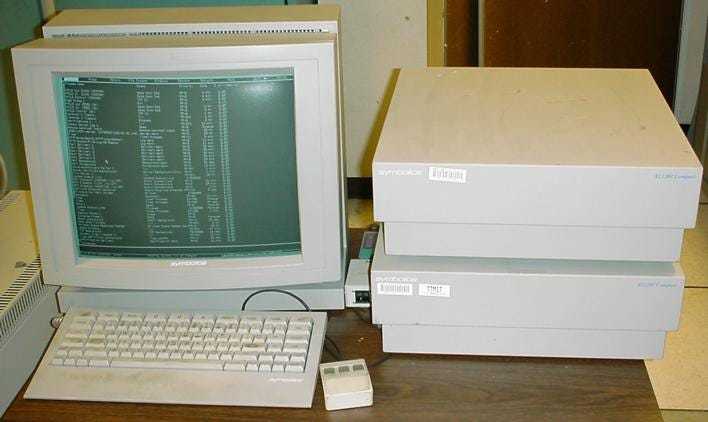
That machine was, in turn, driving the video output to the screen on the right… ENHANCE!

… by using a piece of software, which ran on Genera, known as FrameThrower.

Fun, totally unrelated, bit of trivia: Symbolics registered the very first .com domain name on the entire Internet, on March 15th, 1985 — symbolics.com.
And, finally, those two monitors at the top?

This one is simple: Sony PVM Monitors.
Isn’t computer archaeology fun?
